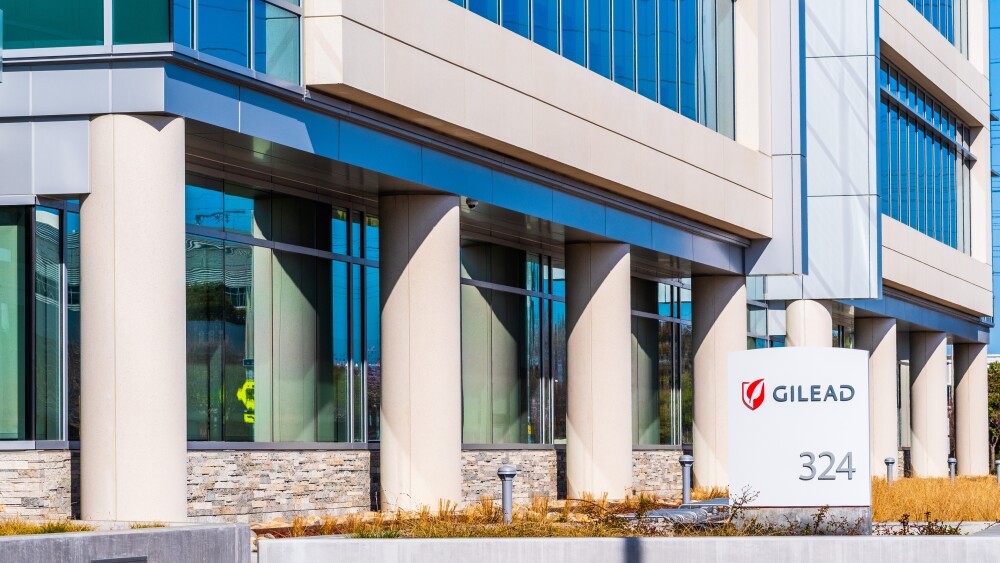August 16, 2016
By Mark Terry, BioSpace.com Breaking News Staff
Although biotech stocks are always volatile, 2016 has been a particularly crazy year so far. And the SPDR S&P Biotech ETF is down 13 percent so far. But despite that, Sean Williams, writing for The Motley Fool, takes a look at four biotech stocks selling low that are likely to be good investments.
Gilead Sciences , located in Foster City, California, isn’t having a particularly good year, with the company’s stock down about 22 percent so far. Although dominant in the hepatitis C market with Sovaldi and Harvoni, most analysts feel those drugs have peaked and it’s only downhill from here.
The company’s not resting on its laurels, however, and is focused on developing hepatitis B (HBV) drugs and products for liver diseases like non-alcoholic steatohepatitis (NASH). And its HIV portfolio is as strong as ever. It also has several promising oncology drugs in its pipeline, including idelalisib, which is in a Phase III trial for relapsed refractory chronic lymphocytic leukemia (CLL).
Williams writes, “Gilead Sciences is generating north of $15 billion in free cash flow annually thanks to HCV drugs and its commanding market presence in HIV via Stribild, Truvada, and the recently launched Genvoya. This cash flow gives Gilead the freedom to repurchase its common stock to improve EPS, increase its dividend, or to acquire other companies.”
Gilead is currently trading for $79.31.
La Jolla, California-based Ligand Pharmaceuticals has 11 products on the market, dominated by Kyprolis and Promacta. It also has an enormous number of drugs in development, or that use its technology. Three drugs that use its technology are awaiting approval and eight are in late-stage development. Keith Speights, writing for The Motley Fool in July, said, “Ligand counts 21 Phase II clinical studies underway. The company has the same number of drugs using its technologies in early-stage testing. That’s a grand total of 64 drugs, targeting a wide variety of indications, that are either on the market, waiting to be approved, or in clinical development—that’s more than a number of the biggest biotechs on the planet can claim.”
In comparison to others on the S&P 500, Ligand is currently up about 5 percent this year. Williams writes, “Though Ligand dipped more modestly than its peers during the early year swoon, it was Ligand’s recently released second-quarter earnings results that whacked its share price. The company reported an adjusted $0.50 per share profit, which was $0.03 lower than expected, and $19.5 million in revenue, which is a bit higher than forecast. Despite sticking to its full-year forecast, some investors headed for the exit.”
What makes Ligand look so good for the future is that deep bench of a pipeline. The company indicates it has more than 140 drugs currently in development across 85+ partners.
Ligand Pharmaceuticals is currently trading for $111.16.
Jazz Pharmaceuticals , headquartered in Dublin, focuses mostly on sleep disorders and products related to hematology and oncology. The company’s shares have been flat so far this year, and Williams writes, “The culprit is none other than Jazz’s second-quarter earnings results, which saw the company lower its full-year EPS outlook to a range of $9.90 to $10.30 from prior guidance of $11.10 to $11.50.”
However, that drop seems related to its buy of Celator Pharmaceuticals for $1.5 billion. In the deal, Jazz picked up Vyxeos, a promising drug for acute myeloid leukemia. Its narcolepsy drug Xyrem increased sales by 13 percent to $281 million in the second quarter, and sales of Defitelio for severe hepatic veno-occlusive disease doubled to $33 million.
Jazz is currently trading for $136.80.
And finally, Celgene , based in Summit, New Jersey. The company’s stock is down about 6 percent this year. It focuses on cancer and immune-inflammatory related diseases.
The company recently released its second quarter financials, reporting net product sales of $2.75 billion for the second quarter, up 22 percent from the same quarter last year. Total revenue in the second quarter rose 21 percent to $2.75 billion compared to $2.28 billion in the same quarter.
The company’s Revlimid sales jumped 18 percent in the second quarter to $1.8 billion, Pomalyst/Imnovid sales were up 35 percent to $318 million for the quarter, and Abraxane rose 2 percent to a second quarter number of $249 million. And its Otezla sales jumped 170 percent year-over-year to $242 million for the second quarter.
Williams writes, “One of the best aspects of Celgene is that it offers some of the most robust organic growth prospects in the industry. … Celgene can also turn to M&A and collaborations as a way to boost growth. The company’s $7.2 billion purchase of Receptos in 2015 allowed Celgene to get hold of ozanimod, an experimental drug designed to treat multiple sclerosis and ulcerative colitis. … Celgene’s 30+ collaborations are nothing to sneeze at, either.”
Celgene is currently trading for $113.64.





